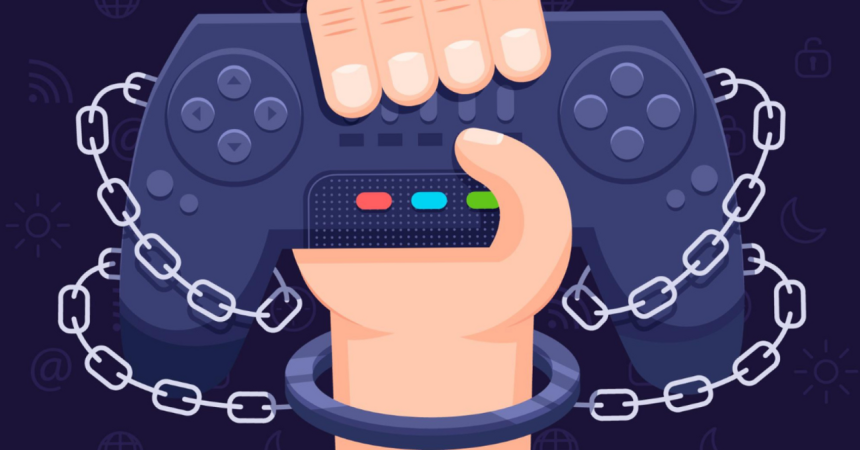Imagine this: You sit down to play just one round of your favorite game. An hour later, you’re still there, eyes glued to the screen, heart racing after every win, and wondering why you can’t seem to stop. Whether it’s a quick spin on a slot game or a competitive hand in a qq poker game, many people find themselves drawn deeper and deeper into gaming, often without even realizing it. But why exactly do games have this magnetic pull? What is it about games that makes us want to keep playing, even when we know we probably should stop? In this article, we’ll dive into the fascinating science behind game addiction, explore the psychology and biology at play, and reveal why so many of us find it so hard to put the controller down.
The Allure of Games: More Than Just Fun
At the heart of it, games are designed to be fun, right? But the truth is, game designers are experts at understanding what makes our brains tick. They don’t just throw together colorful graphics and flashy sounds—they carefully craft experiences that tap into our psychological rewards system. This means games aren’t just about passing time; they’re about triggering powerful feelings of pleasure and achievement. From the adrenaline rush of winning a hand in a qq online game to the thrill of hitting a jackpot on a slot game, these moments activate our brain’s dopamine pathways. Dopamine is often called the “feel-good” neurotransmitter, and it’s responsible for reinforcing behaviors by making us feel rewarded. So when you play a game and score a win—no matter how small—your brain gets a little hit of dopamine, encouraging you to keep going for more.
Dopamine and the Brain’s Reward System
To truly understand why games are so addictive, we have to look at dopamine more closely. This chemical isn’t just about feeling happy; it’s about motivation and reinforcement. When your brain releases dopamine, it’s telling you, “Hey, that was good—do it again!” This is the same system that rewards eating, socializing, and even addictive substances like nicotine or alcohol. What’s clever about games is that they often use variable rewards, which means you never know exactly when the next win or exciting event will happen. Think about a slot game—the reels spin, and the outcome is uncertain until the last second. This unpredictability keeps your brain on high alert, eagerly anticipating that dopamine hit. The unpredictability combined with the intermittent reward schedule is what neuroscientists call “variable ratio reinforcement,” and it’s one of the most powerful mechanisms for building habits—and addictions.
Psychological Hooks: Why We Keep Playing
Besides the dopamine rush, games exploit several psychological factors that pull us back again and again. One big one is the desire for mastery and progression. Games often have levels, leaderboards, or rankings that give players a clear sense of progress. That feeling of “I’m getting better” or “I’m close to unlocking something cool” can be incredibly motivating. We love seeing our skills improve and our status rise. This taps into our natural human need for achievement.
Another key psychological hook is social connection. Many modern games, especially online ones, create communities where players can team up, compete, and share experiences. This sense of belonging and competition drives engagement. Nobody wants to be left behind or lose to friends. Even in solitary games, leaderboards and challenges can create a competitive environment that keeps people hooked.
The third factor is escapism. For some, games offer a break from stress, anxiety, or difficult realities. The immersive worlds and clear objectives provide a comforting sense of control and accomplishment that real life sometimes lacks. While this can be healthy in moderation, it can also lead to excessive gaming if someone uses it to avoid real-world problems.
How Game Design Exploits Human Nature
Game designers are well aware of these psychological tendencies, and they use them deliberately. From the sound effects that celebrate small wins to the visual cues that signal progress, every detail is calculated to keep players engaged. For instance, many games use “loot boxes” or random rewards, which again rely on the variable reward system. The thrill of opening a box and maybe getting something rare is similar to the excitement of gambling on a slot machine.
In fact, many modern games borrow mechanics directly from gambling, blurring the lines between gaming and betting. The “near miss” effect—where you almost win but don’t—can be just as addictive as actual wins, keeping you playing longer to try again. This mechanic is often seen in slot games and even poker games where the tension of almost winning fuels the desire to keep going.
The Dark Side: When Gaming Becomes an Addiction
While gaming can be a fun and healthy hobby for many, it’s important to recognize when it crosses into addiction territory. Gaming addiction—also known as “gaming disorder” by the World Health Organization—is characterized by an inability to control gaming habits despite negative consequences. People with this disorder often neglect work, relationships, or self-care because gaming takes precedence. The problem is that the same dopamine-driven reward system that makes games enjoyable can lead to compulsive behavior, especially for those vulnerable due to genetics, mental health issues, or stressful life circumstances.
Some signs of problematic gaming include losing track of time, using gaming to escape problems, feeling restless or irritable when not playing, and sacrificing other activities or responsibilities. For some, the immersion and social connection found in games become their primary source of fulfillment, which can create a dangerous feedback loop.
Why Are Some People More Prone to Game Addiction?
Not everyone who plays games becomes addicted, so what makes some individuals more vulnerable? The answer lies in a combination of biology, psychology, and environment.
Biologically, some people have a more sensitive dopamine system or lower baseline dopamine levels, making them more susceptible to seeking intense stimulation through gaming or other activities. Psychologically, those with underlying anxiety, depression, or attention issues may find the structure and rewards of games especially appealing as coping mechanisms.
Environmental factors matter too. Social isolation, lack of support, or high stress can push people toward excessive gaming as an escape. Early exposure to gaming or gambling-like mechanics at a young age can also increase risk. Understanding these factors is crucial for parents, educators, and health professionals in identifying and helping those at risk.
The Role of Social Media and Mobile Gaming
In recent years, the explosion of mobile gaming and social media integration has intensified game addiction risks. Mobile games are always at your fingertips, and their short, bite-sized gameplay is designed for quick dopamine hits throughout the day. These games often incorporate social features, daily rewards, and microtransactions, creating endless loops of engagement.
Social media also plays a part by turning gaming into a highly visible, sharable experience. Streaming platforms and gaming influencers create a culture where playing games isn’t just entertainment but a lifestyle and social currency. The pressure to keep up, perform, and belong in these digital communities can push players to spend more time gaming than they intend.
Can Addiction Be Positive? When Does Gaming Help?
Not all gaming is bad. In fact, games have therapeutic potential and many positive benefits. Games can improve cognitive skills like problem-solving, memory, and coordination. Social games foster friendships and teamwork. For some people, gaming provides structure, purpose, and joy during difficult times.
Some therapeutic games are even used to treat mental health conditions, using the same reward systems to encourage positive behaviors. The key is balance and control. When gaming supports wellbeing without interfering with other parts of life, it can be a powerful force for good.
Breaking the Cycle: How to Manage Game Addiction
If you or someone you know feels trapped by gaming habits, it’s important to remember that change is possible. Awareness is the first step. Tracking your playtime honestly can reveal patterns and triggers. Setting boundaries—such as limiting daily gaming time or avoiding games before bed—helps restore control.
Building alternative sources of dopamine and satisfaction outside gaming is also crucial. Exercise, hobbies, social activities, and mindfulness can provide healthy dopamine boosts without negative side effects. For those struggling deeply, professional help from therapists familiar with gaming addiction can be life-changing.
The Future of Gaming and Addiction: What Lies Ahead?
As technology advances, games are becoming more immersive and realistic, with virtual reality and AI-powered personalization. These developments will make gaming even more compelling, potentially raising addiction risks but also offering new tools for moderation and support.
Game developers, policymakers, and health advocates are starting to take addiction concerns seriously, pushing for more transparent design, better warnings, and player protections. As players, staying informed and mindful of our gaming habits is essential in this evolving landscape.
Gaming’s hold on us isn’t magic or mere coincidence—it’s rooted in complex neuroscience and psychology. From the dopamine highs triggered by a winning hand in a poker game to the unpredictable excitement of a slot game’s spinning reels, games are expertly designed to keep us engaged. Recognizing these mechanisms and the fine line between enjoyment and addiction can empower us to play smarter, stay balanced, and keep gaming as the fun escape it’s meant to be.








